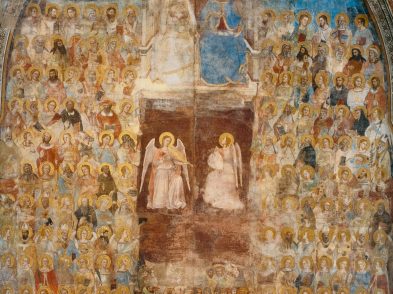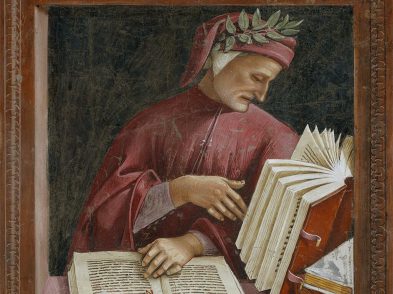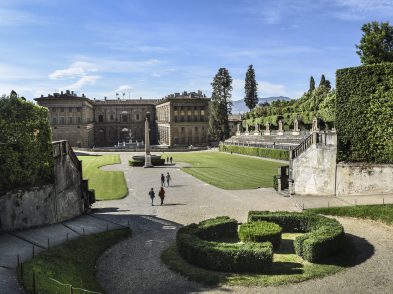When evening has come, I return to my house and go into my study. At the door I take off my clothes of the day, covered with mud and mire, and I put on my regal and courtly garments; and decently reclothed, I enter the ancient courts of ancient men, where, received by them lovingly, I feed on the food that alone is mine and that I was born for. There I am not ashamed to speak with them and to ask them the reason for their actions; and they in their humanity reply to me. And for the space of four hours I feel no boredom, I forget every pain, I do not fear poverty, death does not frighten me. I deliver myself entirely to them. And because Dante says that to have understood without retaining does not make knowledge,I have noted what capital I have made from their conversation and have composed a little work De Principatibus[On Principalities], where I delve as deeply as I can into reflections on this subject, debating what a principality is, of what kinds they are, how they are acquired, how they are maintained, why they are lost.
—From Machiavelli’s Letter to Francesco Vettori, December 10, 1513
Niccolò Machiavelli: writer, astute statesman, philosopher, ruthless power monger, father of political science, cunning schemer, unscrupulous politician, Florentine. Over the last 500 years, the author of The Prince, a treatise on how to obtain and retain power, has seen his share of oscillations in public opinion and scholarly attention. From Elizabethan dramas to Tupac, he has held a place in pop culture for half a millennium. It is only fitting that his hometown commemorate him this year with an exhibition at the Biblioteca Nazionale.
Opened on December 10, the anniversary of Machiavelli’s famous letter to Francesco Vettori, the exhibition will run through February 28, 2014. It follows an exhibition on his life in Rome earlier this year and features pieces from Florentine state museums, archives and libraries, with particular emphasis on the years Machiavelli spent at the service of the Florentine Republic during the turbulent period between the death of Savonarola in 1498 and the return of the Medici in 1512. Accused of conspiring against Florence’s most powerful family, he was exiled in 1513 to his country estate in Sant’Andrea in Percussina (San Casciano), where he drafted his treatise on political power, dedicating it to the Medici scions in hope of gaining reentry into Florentine administrative circles.
The exhibition has nine sections: from Florence of the Savonarolian Republic to the government of Pier Soderini; the arts in Machiavelli’s time; Machiavelli family history; the chancellorship of the Florentine Republic; Secretary Machiavelli; Machiavelli and Soderini; the fall; serious works and frivolous works; in San Casciano, The Prince.
Among the highlights are an autograph manuscript of L’arte della guerra, a relatively unknown portrait of Machiavelli by Ridolfo del Ghirlandaio, and the original warrant for Machiavelli’s 1513 arrest.
Perhaps even more intriguing, however, is the presence of the celebrated Tavola Doria, a depiction of the central scene of Leonardo da Vinci’s (now lost) Battle of Anghiari, recently rediscovered and on display in Florence for the first time. The work—some scholars attribute it to the master himself while others consider it a coeval copy by another hand—had disappeared for years and was considered lost until it turned up in a Geneva safe in 2012. Exhibiting the Tavola Doria within the context of an exhibition on Machiavelli means placing it in its original historical context—the massive mural, never completed, was commissioned from Leonardo by Pier Soderini in 1503 to commemorate the Signoria’s glorious victory over Visconti’s troops in 1440.
According to agreements with the Tokyo Fuji Art Museum, which had purchased the panel sometime after World War II, the Tavola Doria will alternate between Italy and Japan, and will not be seen again in Italy for a number of years.
La via al ‘Principe’: Niccolò Machiavelli da Firenze a San Casciano
Until February 28, 2014
Biblioteca Nazionale (via Magliabechi entrance), Florence
Free entrance








